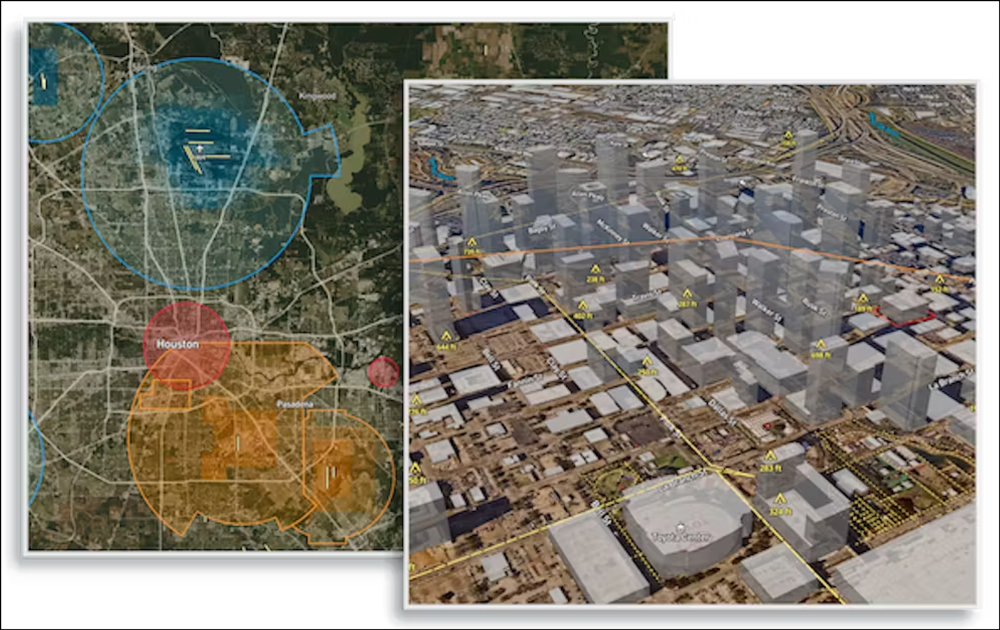December 2023, Vol. 250, No. 12
Features
Drones Used to Improve Safety of Pipelines
By Mike Danielak, Director, Client Strategy and Development, Skyward
(P&GJ) — There’s no way around it — infrastructure inspection is as risky and dangerous as it is vital.
Helicopters can be a fast way to inspect a pipeline or transmission line, but they pose a certain amount of risk, as does the use of planes. For the past few years, companies have begun experimenting with unmanned aerial systems (known as UAS, or drones) to help improve worker safety, among other benefits.
For starters, drones enable people to work at height less frequently, and often, the risks of manned flights can be eliminated altogether. Keeping workers safe is reason enough, but drones can also help to identify structural weaknesses more quickly than older, riskier methods.
This article outlines some of the key ways that companies are using drones to maintain infrastructure more safely such as bridges, roads, oil and gas pipelines, transmission lines, and more.
Workforce Safety
Working at height isn’t the only risk inspectors face. Inspection workers may also come into contact with toxic chemicals or emissions, moving machinery, speeding traffic or high-voltage equipment. These risks multiply when the asset is in disrepair.
Drones make it possible to do surveillance work from the ground and at a safe distance. As the FAA grants more waivers to enable flights beyond visual line of sight (BVLOS), field workers will be able to rely on drones to inspect gas pipelines and power lines, reducing the miles they have to drive on poorly maintained back roads.
“Many of the things we’ve done in traditional ways have required manned helicopters, humans climbing things or our people getting in harm’s way to do inspections or routine maintenance,” said Harry Nuttall, director of system air for natural gas and electric distributor Southern Company, based in Atlanta. “Putting an unmanned system in there really enhances safety and efficiency.”
UAS is especially valuable following disasters, when damaged infrastructure systems need immediate assessment, but conditions are still hazardous.
Drone pilots, using platforms like Skyward, can launch within minutes, using the FAA’s automated LAANC approval process. They can also see temporary flight restrictions and coordinate safe flights with colleagues, who may also be flying drones or other aircraft in the area.
Here are some of the types of infrastructure inspections that are becoming dramatically safer with UAS:
- Leak detection and equipment corrosion, for oil and natural gas pipelines
- Identifying vegetation encroachment and wildfire fuels buildup, leaning power poles, sagging wires, snagged metallic balloons, equipment wear, vandalism and more, for transmission and distribution (T&D) lines
- Looking for signs of wear and anomalies in vertical structures — storage tanks, for example
- Identifying structural defects and needed repairs, assuring environmental compliance and avoiding stop-work claims, during replacement work for dams and levees
- Assessing the cracking and maintenance needs of pavement, for company roadways
- Assessments of emergency, post-weather-event and post-disaster damage for all of the above
Improved Reliability
Drones are playing an increasingly important role in improving the reliability of the energy, water and transportation systems we all rely on. Because drones enable infrastructure managers to both inspect more frequently and to obtain better data, they provide more timely understanding of what needs attention.
Drones also help public agencies, utilities and companies that own or manage infrastructure systems to mitigate corporate risk. By keeping the field force out of harm’s way, drones curtail injuries and the lost work hours that come with them.
Medical insurance, workers compensation insurance and liability insurance expenses can also be reduced as the safety record improves. In addition, better data reporting and improved compliance with environmental regulations bring yet more risk-abatement benefits.
We know many energy-related and other systems of infrastructure have exceeded or are nearing expected lifespans, but with proper inspection, updates and repair, they can remain safe.
The scope of inspection is vast — 2.6 million miles of oil and gas pipelines, 100,000 miles of levees, 14,000 dams and 170,000 miles of railroad tracks. Thus, speed and prioritization are key.
UAS technology is proving to be an efficient and much safer tool for such a big job. With the coming of 5G, we can expect to see connected drones conducting BVLOS inspections autonomously, further accelerating this crucial work.
About the Author: Mike Danielak is director of client strategy and business development at Skyward.
Editor’s note: This article originally appeared in Roads & Bridges.






Comments